963 Hours to Kill: Knit’s Island
by Marijn Bril
“Somewhere on the internet, there is an island of 250 square kilometers in which individuals gather in a community to simulate a survivalist fiction. Some spend thousands of hours on it.” – Knit’s Island
In Knit’s Island, three French filmmakers take us on their journey through the sandbox-style survivalist game Day Z. In the fictional post-Soviet land Chernarus, an infectious disease has turned inhabitants into zombies, leaving an apocalyptic no man’s land in its wake. On Day Zero, the players are dropped at the shore and tasked to stay alive amidst 60 other players on the same server. They have to find or cultivate food, decontaminate water to drink, make sure to stay warm, and prevent getting injured by the zombies or other players – or they will die and have to start all over again. Rather than killing and looting, the filmmakers’ intentions are of a pacifistic nature: to capture the people behind the avatars. The film interweaves many different modalities of time and space, both within and outside of the game, presenting an almost anthropological account of the players as they make friends and enemies, roam the virtual land, and share their private stories.
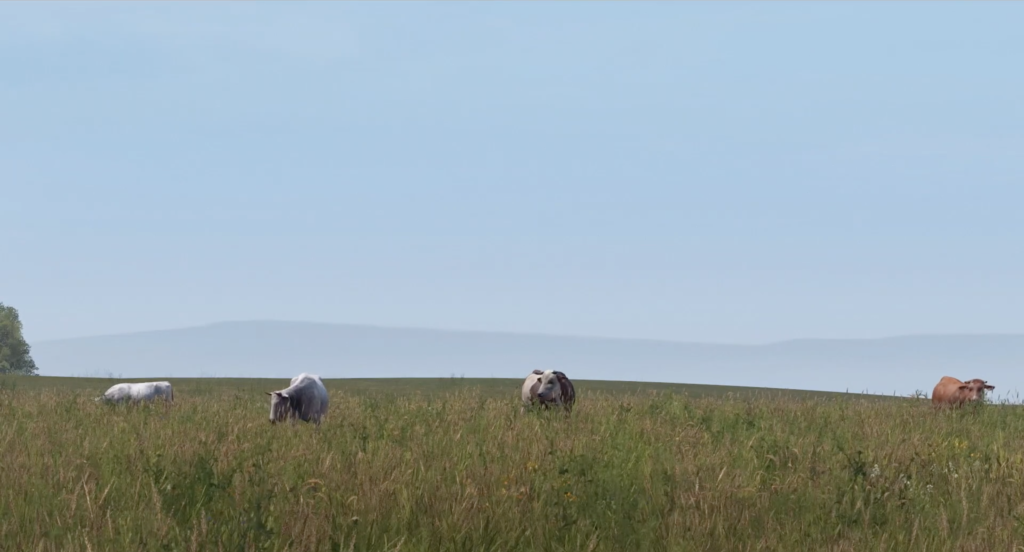
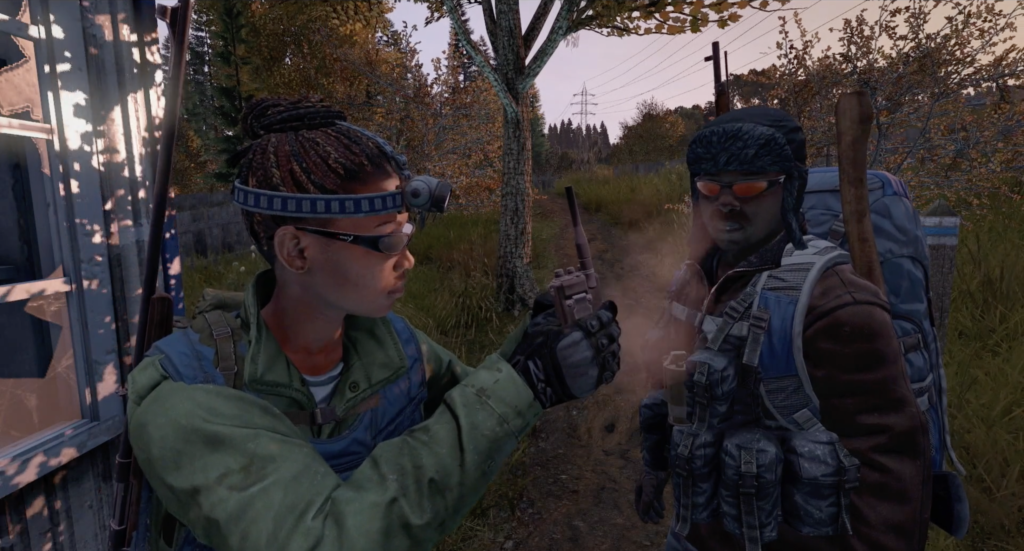
In the first minutes of the movie, the counter already shows 58 hours spent in-game. We meet the filmmakers for the first time lost in Chernarus, as they try to find out where to go. They connect with someone from the Church of the Living, a religious group formed against violence, on a walkie-talkie and introduce themselves: Ekiem is the director/journalist, Quentin is the cameraman and Quilhelm is the technician. Through their avatar personas, they become participant observers in the virtual environments of Day Z. Knit’s Island is a typical machinima film, shot entirely within the game environment. However, it differs from the player’s perspective as it leaves out the interface consisting of their survival statistics, inventory, and interaction. At times, we get a glimpse behind the scenes of the in-situ filming, such as when the filmmakers discuss the difficulty of dealing with the controller and what to wear for their respective roles in the film crew.
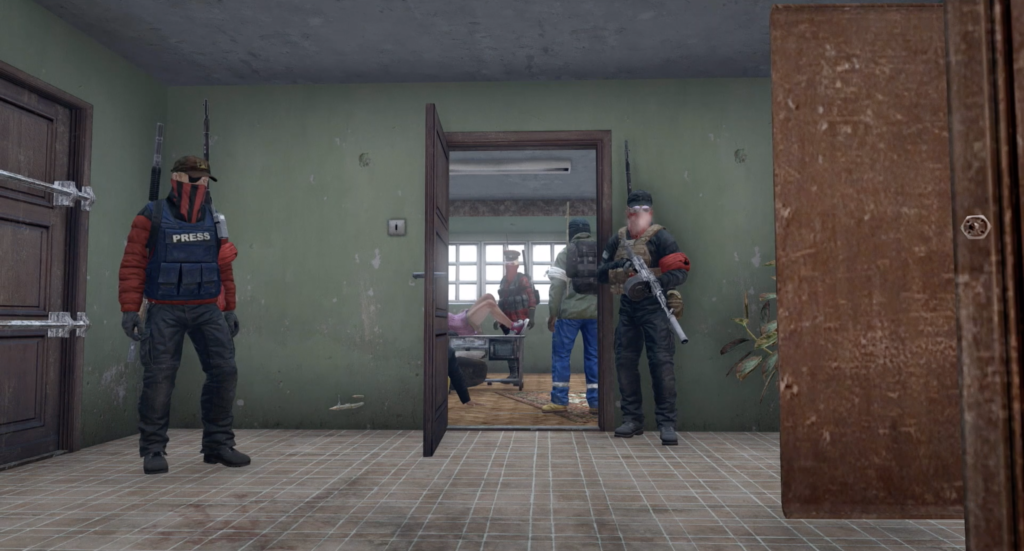
Knit’s Island reverberates a notion of real-time as the filmmakers-turned-players meet characters ranging from cartel members to hippies and religious sects. The game’s proximity voice communication allows players to talk to each other in the virtual environment, which is the basis for the conversations and interviews throughout the film. Although the film does not showcase much of the zombie violence and gunfights which is characteristic of the game, tensions rise when they encounter a local gang that holds dominion over the region, hates farming and enjoys murder and cannibalism. When one crew member loses the group and is accosted by a hostile character, he screams ‘Don’t shoot! I’m a filmmaker!’. His screams are in vain as a shot is fired and the screen goes black.
[...] the filmmakers uncover the logic of game time, which through its accelerated details, paradoxically captures the attention of the people behind their computers for years on end.
The film continues its progression and time accumulates – 305 hours in-game and 26 minutes of the film. The notion of time and space is further underlined in some of their encounters with local characters. We meet a religious clan consisting of Reverend Stone and Father David, who take pride in their ability to lend an ear to other players’ private dilemmas. When asked how long they’ve been their respective characters, Reverend Stone says they’ve been around for three years, but it feels as if they’ve been in Chernarus for seven or eight, maybe ten years. A friendly couple, who are also romantically involved outside of the screen, tries to plant some zucchinis and notes that it takes 16,5 minutes for them to grow into a ready-to-eat vegetable. In these moments, the filmmakers uncover the logic of game time, which through its accelerated details, paradoxically captures the attention of the people behind their computers for years on end.
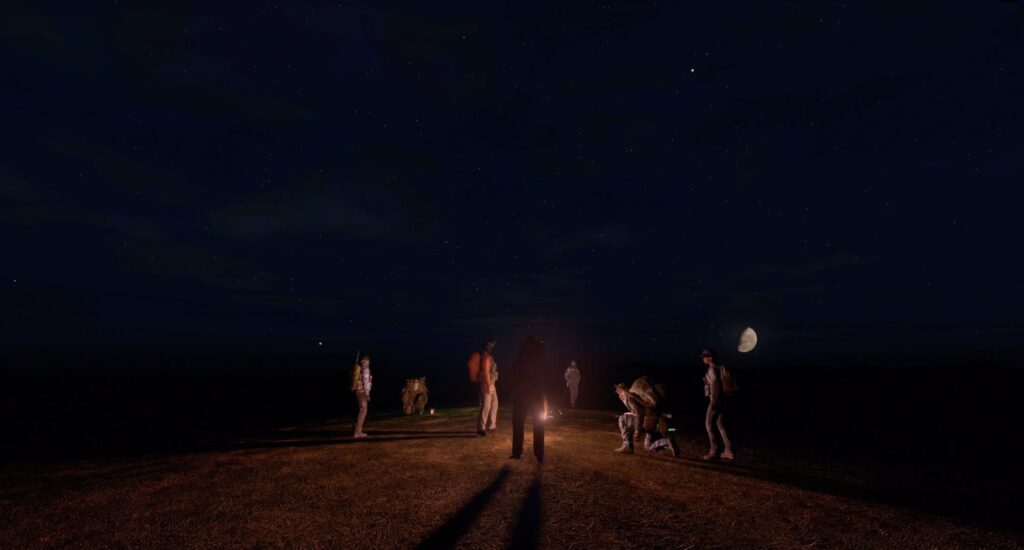
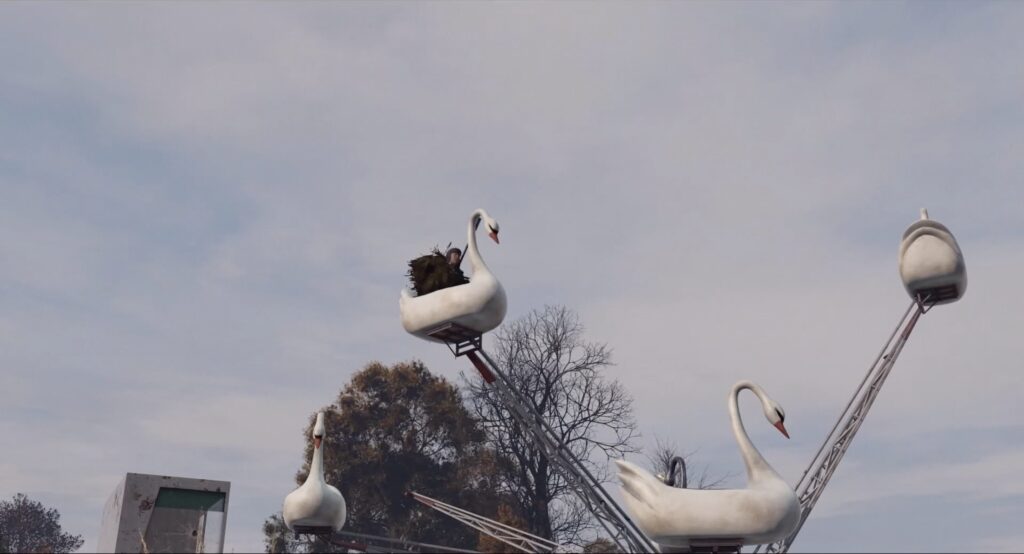
The game world unfolds as an alternative reality adjacent to daily life, especially as the pandemic hits midway through filming and ‘real life’ suddenly no longer seems to be in such high resolution. As the characters stare out of the rendered windows of their temporary refuge in the game world, they describe the weather they see from their physical windows, which are geographically located ranging from South Africa to Canada. The almost philosophical consideration of virtual-physical distinction suddenly becomes tangible as a cartel leader leaves an interview mid-way to tend to her crying child in the background.
The spatial disconnect is further problematised as the documentary makers cross vast distances through the virtual world. When the crew goes on a long hike with their fellow characters, one of them remarks they’ve never been this far and counts up to seven hours of in-game hiking. During the night, they discuss the stark contrast between the game’s beautiful environment and its, at times, brutal social reality: “Look around you. You hear the wind howling, the campfire. It’s so relaxing here. But anytime we could be shot here, and it could be real bad.” The film itself further immerses the viewer in the hyperrealistic gameworld through cinematic shots of rippling creeks, hazy fields, and mountain views – emphasizing how one can exist within these environments.

After 963 hours spent in Chernarus, the lines between fiction and non-fiction have blurred to such a degree that the distinction seems to be futile. The documentary medium already embodies this ambivalence, as the non-fiction mode sets out to capture the ‘real lives’ of fictional communities living in virtual environments. In a game world that challenges its inhabitants to stay alive, the filmmakers paint a picture of what it means to live. They show how surviving is more than just a means to an end and becomes a vehicle for exploration, social bonds, and meaning-making. Right before the film goes to its credit lines, we catch a glimpse of what appears to be the view from the windows of the filmmakers, an environment they’ve existed within yet have been somewhat detached from during their quest for reality in-game – underlining the fragile balance between isolation and community.
Marijn Bril is a media art curator and researcher focusing on the complexity and absurdity of digital culture.